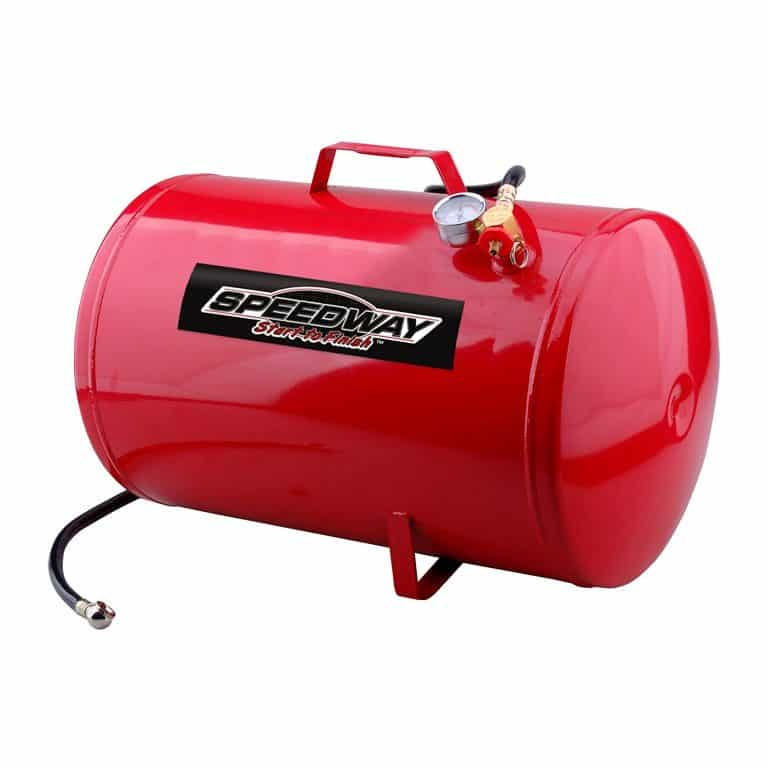By
Bob Formisano
Bob Formisano
Bob Formisano is a licensed architect and builder with nearly 40 years of experience building new homes and restoring older homes. One of his specialties is repairing old systems dating back to the 1920s, including galvanized water pipes, knob-and-tube wiring, and more. His home repair articles for The Spruce span more than 10 years.
Learn more about The Spruce's Editorial Process
Updated on 10/13/22
Reviewed by
Kelly Bacon
Reviewed by Kelly Bacon
Kelly Bacon is a licensed general contractor with over 40 years of experience in construction, home building and remodeling, and commercial building. He is a member of The Spruce Home Improvement Review Board.
Learn more about The Spruce's Review Board
Pro-Lift A compressed air tank, or "carry tank," is a handy workshop or garage tool that allows you to store compressed air in a portable, easy-to-use unit. You fill up the tank with compressed air, using any type of air compressor, then carry the tank to wherever you need it. Compressed air tanks are most commonly used for filling up tires—on cars, bicycles, trailers, ATVs, etc.—but they're also useful for applications using a blow-off tip. Its relatively light weight and large size make a portable compressed air tank more useful in the field than a portable air compressor in many situations. The tanks typically are too small for operating air tools for more than a few quick operations. A portable compressed air tank can also be used in conjunction with a portable air compressor to improve air capacity and pressure for certain air tool applications.
A compressed air tank is a pressure vessel that holds air compressed under pressure. It releases this air on an on-demand basis through the use of a valve. Though some air tanks might be stationery, they can also be portable.
The components of a portable compressed air tank provide all the features you need for easy and safe use.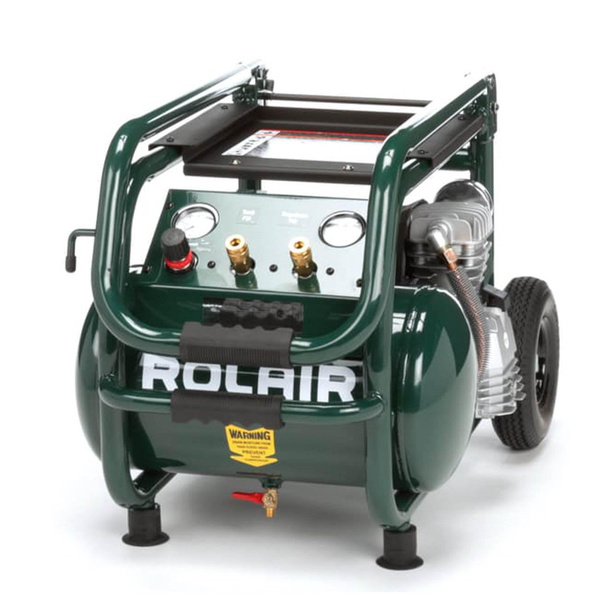 You'll typically find the following components on these tools:
You'll typically find the following components on these tools:
When filling a portable compressed air tank, watch the pressure gauge carefully. You never want the pressure to exceed the manufacturer's recommendation. You'll also want to underfill the tank a bit to allow the air to expand with heat without worry of potential rupture of the tank.
Compressed air tanks come in different sizes, with capacities measured in gallons of compressed air. Common sizes include 5, 7, 9, 10, and 11 gallons. A 10-gallon or larger size is likely to be more useful for a variety of applications, while a small 5- or 7-gallon tank is highly portable and takes up less space.
To estimate how the tank capacity translates to practical air volume, keep in mind that 7.5 gallons of tank volume equal 1 cubic foot of volume. A small car tire has a volume of approximately 1 cubic foot. That means a 7-gallon air tank does not have quite enough capacity to fill a small car tire that's completely flat.
In addition to capacity, compressed air tanks have a maximum pressure rating measured in pounds-per-square-inch or psi. Common ratings range from 125 psi to over 150 psi. This rating indicates the maximum amount of air pressure the tank can safely handle. However, it's a good idea not to fill the tank to its maximum pressure level, because air pressure increases with heat. So, for example, if you leave a tank in the sun the pressure inside the tank will rise even without adding more air. If the tank is completely full, the pressure could exceed the rated maximum pressure and cause a rupture.
This rating indicates the maximum amount of air pressure the tank can safely handle. However, it's a good idea not to fill the tank to its maximum pressure level, because air pressure increases with heat. So, for example, if you leave a tank in the sun the pressure inside the tank will rise even without adding more air. If the tank is completely full, the pressure could exceed the rated maximum pressure and cause a rupture.
If you need compressed air in any remote location where there's no electricity to run a compressor, you can fill up an air tank at home by using an air compressor; if you don't have one, you can use the compressor at a gas station or hardware store. Simply attach the fill nipple to the tank and use the compressor as you normally would to slowly fill the tank, watching the pressure gauge to be certain the pressure doesn't rise too quickly or too high.
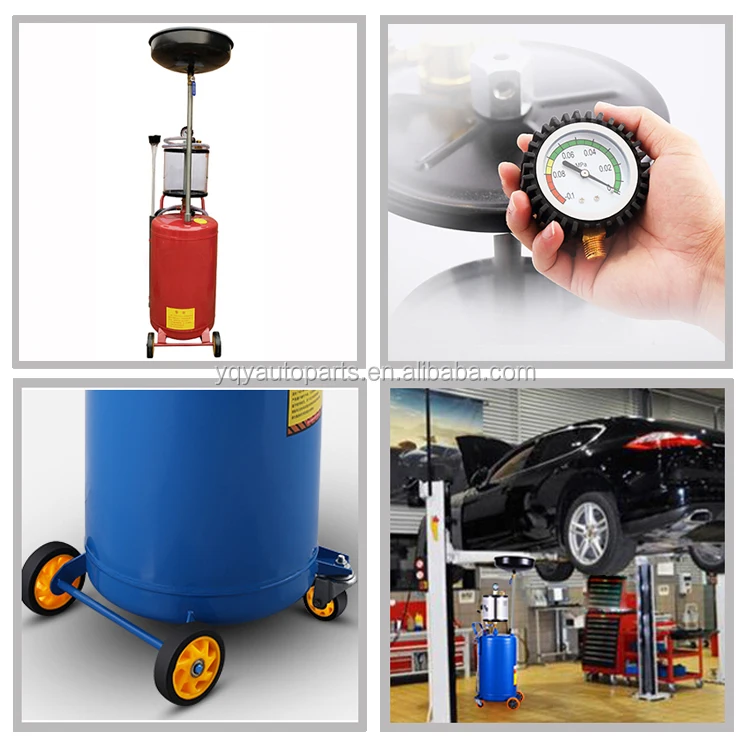 com
com Table of Contents
The tank is rated to fill about 30 tires from 15 to 35 lbs. Don’t have to listen to a compressor either.
Assuming you’ve started at 0 psig (14.7 psia), you need a tank of at least 6.86 cubic feet at 85 psig to inflate 1 such tire from 0 to 85 psi. That’s over 51 gallons. Larger than the typical residential water heater. Double the pressure and you can halve the volume, so 3.43 cubic feet at 170 psi.
A small car tire has a volume of approximately 1 cubic foot. That means a 7-gallon air tank does not have quite enough capacity to fill a small car tire that’s completely flat
A small car tire has a volume of approximately 1 cubic foot. That means a 7-gallon air tank does not have quite enough capacity to fill a small car tire that’s completely flat
Larin portable air tank 11 gallon capacity is designed to provide compressed air for inflating tires, cleaning and much more. It features a pressure tested welded steel tank and has a maximum pressure of 125 PSI.
It features a pressure tested welded steel tank and has a maximum pressure of 125 PSI.
The tank is rated to fill about 30 tires from 15 to 35 lbs. Don’t have to listen to a compressor either.
A 3-gallon air compressor will be able to fill most car tires with no problem. If filling a tire from empty, it may take more than one tank of air, depending on the tire size but it will get the job done. The only case where it may not work is if the tire’s PSI exceeds the compressor’s max PSI.
A small car tire has a volume of approximately 1 cubic foot. That means a 7-gallon air tank does not have quite enough capacity to fill a small car tire that’s completely flat
Assuming you’ve started at 0 psig (14.7 psia), you need a tank of at least 6. 86 cubic feet at 85 psig to inflate 1 such tire from 0 to 85 psi. That’s over 51 gallons. Larger than the typical residential water heater. Double the pressure and you can halve the volume, so 3.43 cubic feet at 170 psi.
86 cubic feet at 85 psig to inflate 1 such tire from 0 to 85 psi. That’s over 51 gallons. Larger than the typical residential water heater. Double the pressure and you can halve the volume, so 3.43 cubic feet at 170 psi.
Assuming you’ve started at 0 psig (14.7 psia), you need a tank of at least 6.86 cubic feet at 85 psig to inflate 1 such tire from 0 to 85 psi. That’s over 51 gallons. Larger than the typical residential water heater. Double the pressure and you can halve the volume, so 3.43 cubic feet at 170 psi.
A small car tire has a volume of approximately 1 cubic foot. That means a 7-gallon air tank does not have quite enough capacity to fill a small car tire that’s completely flat
Maintaining correct tire pressure affects a tire’s wear and improves its performance. Luckily, you can easily inflate almost any tire at your job site if you have an air compressor
For filling car tires, you will only need to run them up to the 32 PSI for most passenger cars, or maybe 35 PSI on a cold day. A portable 1 or 2 CFM compressor, at 90 PSI, should serve you well for filling car tires.
A portable 1 or 2 CFM compressor, at 90 PSI, should serve you well for filling car tires.
Assuming you’ve started at 0 psig (14.7 psia), you need a tank of at least 6.86 cubic feet at 85 psig to inflate 1 such tire from 0 to 85 psi. That’s over 51 gallons. Larger than the typical residential water heater. Double the pressure and you can halve the volume, so 3.43 cubic feet at 170 psi.
For filling car tires, you will only need to run them up to the 32 PSI for most passenger cars, or maybe 35 PSI on a cold day. A portable 1 or 2 CFM compressor, at 90 PSI, should serve you well for filling car tires.
Maintaining correct tire pressure affects a tire’s wear and improves its performance. Luckily, you can easily inflate almost any tire at your job site if you have an air compressor
What size air compressor for changing tyres? 10 bar (or 150psi) is normally adequate for most automotive applications.
To fill the tires of the car, you just have to run up to 32 PSI for most cars, or maybe 35 PSI for a cold day. A portable compressor 1 or 2 CFM, 90 PSI, must be used to fill the tires of the car. If you need to use a pneumatic exchange machine, then you will need 4 CFM or so.
Maintaining correct tire pressure affects a tire’s wear and improves its performance. Luckily, you can easily inflate almost any tire at your job site if you have an air compressor
DO NOT use your compressor to fill bike tires or wheelbarrow tires! You can instantly damage your tires! Don’t set the compressor’s psi to match your tire’s psi. It will take too long to fill.
A 3-gallon air compressor will be able to fill most car tires with no problem.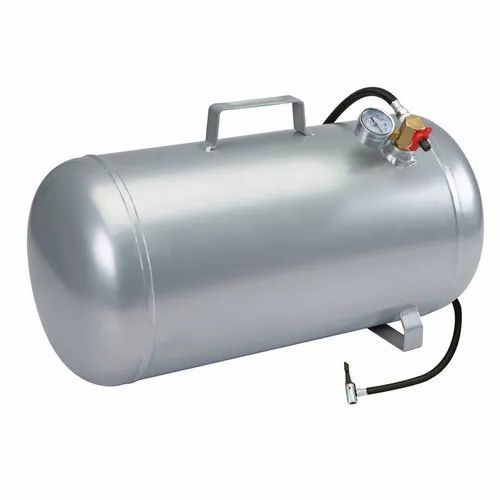 If filling a tire from empty, it may take more than one tank of air, depending on the tire size but it will get the job done. The only case where it may not work is if the tire’s PSI exceeds the compressor’s max PSI.
If filling a tire from empty, it may take more than one tank of air, depending on the tire size but it will get the job done. The only case where it may not work is if the tire’s PSI exceeds the compressor’s max PSI.
30. What Size Air Compressor for Filling Car Tires? For filling car tires, you will only need to run them up to the 32 PSI for most passenger cars, or maybe 35 PSI on a cold day. A portable 1 or 2 CFM compressor, at 90 PSI, should serve you well for filling car tires.
An air compressor to inflate tires can be convenient if you get a flat. An air compressor to inflate tires can be convenient if you get a flat. With a portable tire inflator, you can easily inflate your tire and go on with your day
DO NOT use your compressor to fill bike tires or wheelbarrow tires! You can instantly damage your tires! Don’t set the compressor’s psi to match your tire’s psi. It will take too long to fill.
It will take too long to fill.
As a general rule, it’s best to use a compressor with a maximum operating pressure of at least 10 PSI higher than the recommended tire pressure. So if your tire needs 100 PSI, you’ll want a compressor capable of generating 110 PSI or higher.
Home home renovation How to use the portable compressed air tank
The compressed air tank, or “carrier tank”, is a handy workshop or garage tool that allows you to store compressed air in a portable and easy-to-use device. You fill the tank with compressed air using any type of air compressor and then transport the tank where you need it.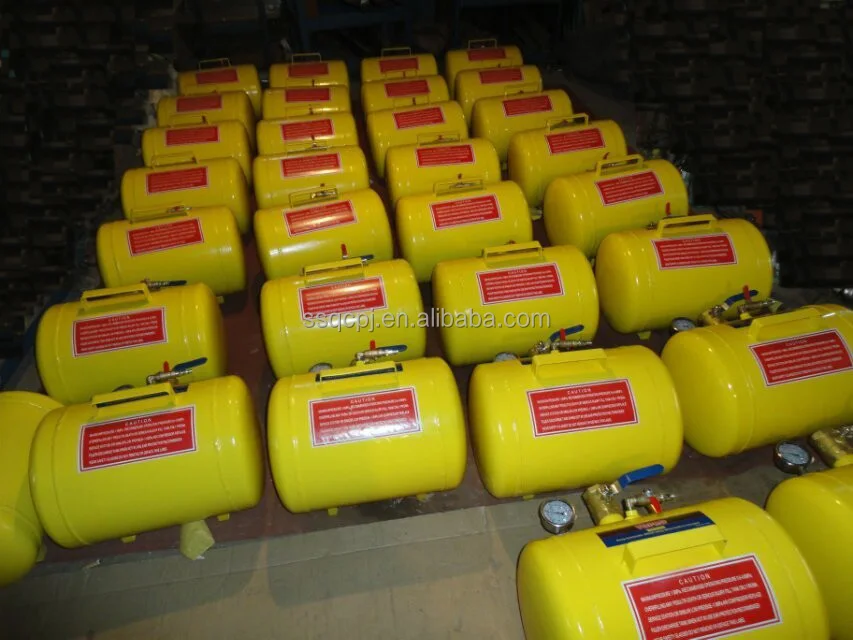 Compressed air containers are most commonly used to fill tires - on cars, bicycles, trailers, ATVs, etc. - but they are also useful for applications using a diverter tip. Tanks are usually too small to handle air tools for more than a few quick jobs.
Compressed air containers are most commonly used to fill tires - on cars, bicycles, trailers, ATVs, etc. - but they are also useful for applications using a diverter tip. Tanks are usually too small to handle air tools for more than a few quick jobs.
The best features of a portable compressed air tank are its relatively light weight and large size, which can make it more useful in the field than a portable air compressor. For example, if you need compressed air in any remote location where there is no electricity to run the compressor, you can fill up the air tank at home (or at the outlet gas station) and take it out into the field. A compressed air tank is much lighter than an air compressor with a similarly sized tank, and much larger than the tanks on portable compressors like pancake compressors.
Compressed air tanks come in different sizes. Their capacity is measured in gallons of compressed air. Common sizes include 5, 7, 9, 10 and 11 gallons. A 10 gallon or larger size is likely to be more useful for a variety of applications, while a smaller 5 or 7 gallon tank is very portable and takes up less space.
Common sizes include 5, 7, 9, 10 and 11 gallons. A 10 gallon or larger size is likely to be more useful for a variety of applications, while a smaller 5 or 7 gallon tank is very portable and takes up less space.
As an example of how power corresponds to air volume, 1 cubic foot of volume equals 7.5 gallons. A small car tire has a volume of about 1 cubic foot. This means that the 7 gallon air reservoir does not have enough capacity to fill a small car tire that is completely flat.
In addition to capacity, compressed air cylinders have a maximum pressure rating, measured in pounds per square inch or psi. General ratings range from 125 psi to over 150 psi. This rating indicates the maximum amount of air the tank can safely handle. However, it is a good idea not to fill the tank to the maximum pressure level because air pressure increases with heat. So, for example, if you leave a tank in the sun, the pressure inside the tank will rise without even adding more air. If the tank is completely filled, the pressure may exceed the rated maximum pressure.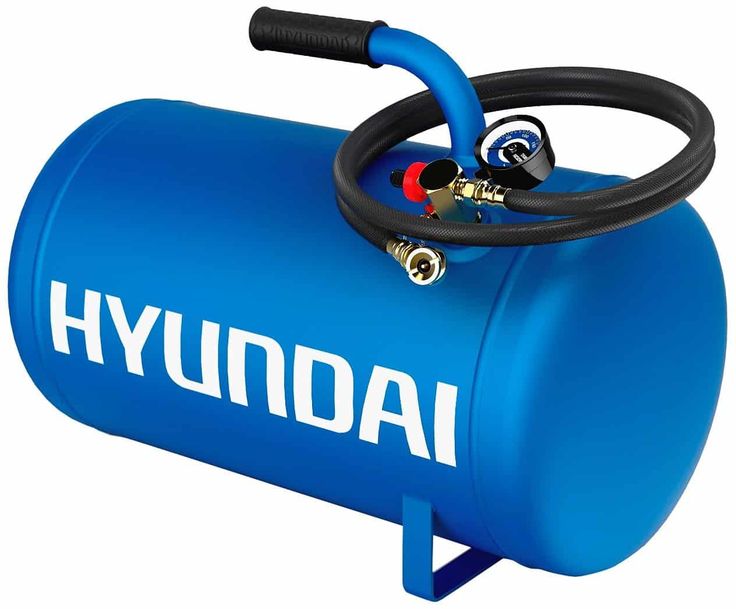
Portable compressed air components provide all the features you need for easy and safe use. You will usually find the following components for these tools:
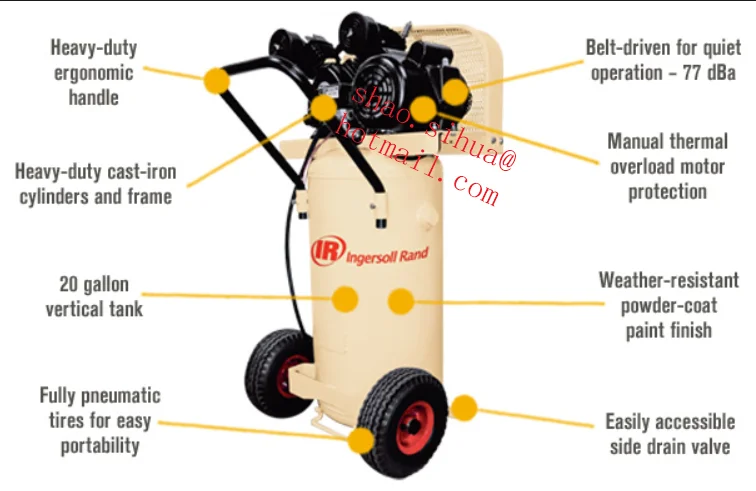
Other necessary tools for your workshop.
Horticulture
Horticulture
Holidays
Home Repair
Gardening
Feasts
Gardening
Cleaning
 User Manual - Manuals+
User Manual - Manuals+ User and Safety Instructions
Save this manual Save this manual for warnings and precautions, as well as assembly, operation, inspection, maintenance, and cleaning procedures. Write the serial number of the product at the end of the manual next to the assembly diagram (or the month and year of purchase if the product does not have a number).
Keep this manual and receipt in a safe and dry place for future reference.
Portable Gallon Air Tank
65594 5 Gallon Air Reservoir
94801 7 Gallon Air Reservoir
65595 11 Gallon Air Reservoir
Visit our website at: http://www.harborfreight.com Write to our technical support at: [email protected]
When unpacking, check that the product is intact and undamaged. If any parts are missing or broken, call 1-888-866-579 as soon as possible7.
Copyright © 2011 Harbor Freight Tools®. All rights reserved. No part of this manual or any images contained therein may be reproduced in any form or form without the express written consent of Harbor Freight Tools.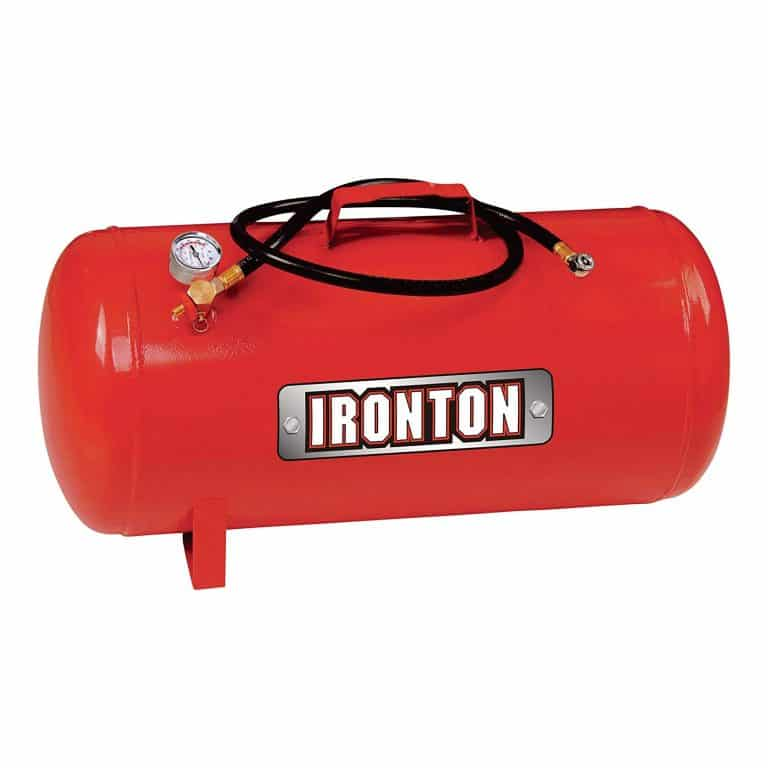 The charts in this guide cannot be drawn proportionally. Due to continuous improvements, the actual product may differ slightly from the product described here.
The charts in this guide cannot be drawn proportionally. Due to continuous improvements, the actual product may differ slightly from the product described here.
Tools required for assembly and maintenance may not be included.
WARNING Read this material before using this product. Failure to do so could result in serious injury. SAVE THIS MANUAL.
| Tank Capacity | Model 65594: 5 gallons Model 94801: 7 gallons Model 65595: 11 gallons | Max. Air pressure | 125 psi (65594/65595) 140 psi (94801) |
| Hose Length | 3 ft (all models) |
Hazard Symbol and Signal Words
This is a warning symbol. It is used to warn of potential injury hazards. Obey all safety messages that follow this symbol to avoid possible injury or death.
DANGER! indicates a hazardous situation which, if not avoided, will result in death or serious injury.
WARNING indicates a hazardous situation which, if not avoided, could result in death or serious injury.
WARNING, Used with a caution symbol, indicates a hazardous situation which, if not avoided, may result in minor or moderate injury.
CAUTION is used to indicate non-injury activities.
WARNING, without hazard symbol is used to indicate actions not related to personal injury.
INSTRUCTIONS FOR FIRE, ELECTRIC SHOCK, OR PERSONAL INJURY

The working area
In order to avoid the risk of injuries, damage to equipment, fire and electric shock, make sure that your working area is:
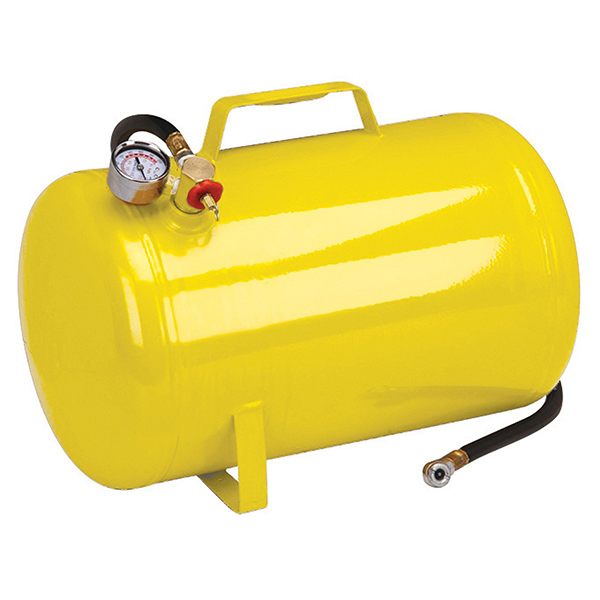
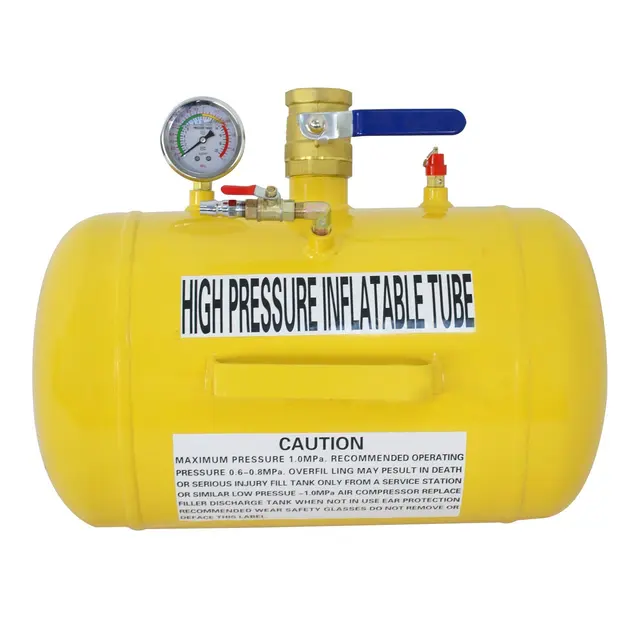
Before installing or using this product, read ALL IMPORTANT SAFETY INFORMATION at the beginning of this document, including all headings within it.
Note: For more information about the parts listed on the following pages, refer to the assembly diagram at the end of this manual.
Filling the tank

Note: Watch the pressure gauge (3) while filling the air reservoir. Fill in as needed. WARNING! TO AVOID SERIOUS INJURY: Do not overfill tank.
Bleeding the tank
WARNING! Do not pump. Do not exceed the maximum pressure rating of any inflatable object. Check pressure frequently while inflating. The air tank should be inspected periodically. If any damage to the welds is noticed, do not use the tank.
If any damage to the welds is noticed, do not use the tank.
 Store in a clean and dry place out of the reach of children.
Store in a clean and dry place out of the reach of children. WARNING! Failure to properly depressurize the tank before proceeding could result in serious injury.
b. Remove pressure gauge and hose.
c. Take the tank to a pressure vessel disposal service, if available.
e. If a pressure tank disposal service is not available, place the tank in secure and stable (larger) holes in the side of the tank. Then take it to the appropriate recycling center.
Air tank storage
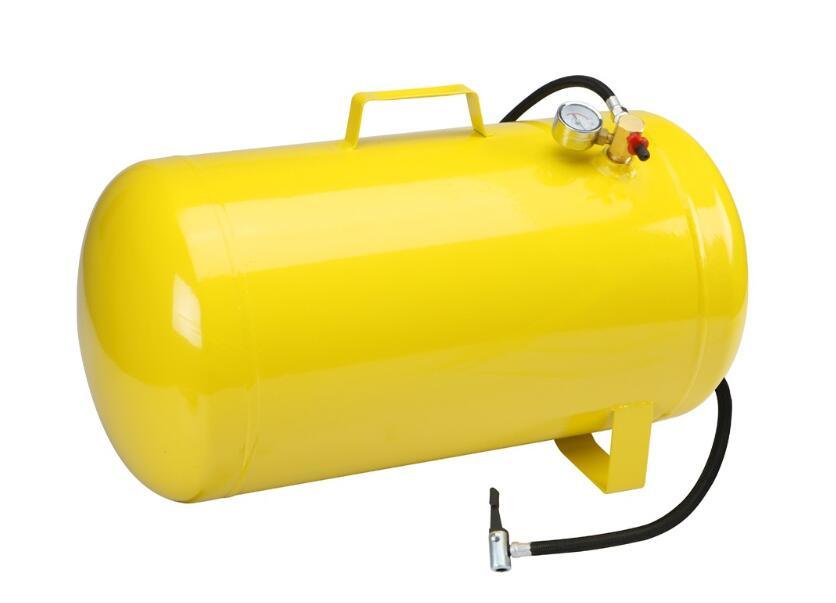 This will prevent air leakage from the air hose.
This will prevent air leakage from the air hose. If there is any doubt about the safe or unsafe condition, do not use the tool.
Record the serial number here:
Note: If the product does not have a serial number, record the month and year of purchase instead.
Note. Some parts are listed and shown for illustrative purposes only and are not available individually as spare parts. Parts cannot be interchanged. Please specify UPC number when ordering:
90 DAY LIMITED WARRANTY
Harbor Freight Tools Co. makes every effort to ensure that its products meet high standards of quality and durability and warrants to the original purchaser that this product is free from defects in material and workmanship for a period of 90 days from the date of purchase. This warranty does not cover damage arising directly or indirectly from misuse, abuse, negligence or accident, repairs or alterations outside of our facilities, criminal activity, improper installation, normal wear and tear or lack of maintenance. In no event shall we be liable for death, injury to persons or property, or incidental, incidental, special, or consequential damages resulting from the use of our product. Some states do not allow the exclusion or limitation of incidental or consequential damages, so the above limitation or exclusion may not apply to you. THIS WARRANTY IS EXPRESSLY IN LIEU OF ALL OTHER WARRANTIES, EXPRESS OR IMPLIED, INCLUDING THE WARRANTIES OF MERCHANTABILITY AND FITNESS. Assume tag Under this warranty, the product or part must be returned to us, shipping prepaid. The goods must be accompanied by proof of the date of purchase and an explanation of the claim. If our inspection confirms a defect, we will either repair or replace the product of our choice, or we may decide to refund the purchase price if we are unable to provide you with a replacement promptly and promptly.
This warranty does not cover damage arising directly or indirectly from misuse, abuse, negligence or accident, repairs or alterations outside of our facilities, criminal activity, improper installation, normal wear and tear or lack of maintenance. In no event shall we be liable for death, injury to persons or property, or incidental, incidental, special, or consequential damages resulting from the use of our product. Some states do not allow the exclusion or limitation of incidental or consequential damages, so the above limitation or exclusion may not apply to you. THIS WARRANTY IS EXPRESSLY IN LIEU OF ALL OTHER WARRANTIES, EXPRESS OR IMPLIED, INCLUDING THE WARRANTIES OF MERCHANTABILITY AND FITNESS. Assume tag Under this warranty, the product or part must be returned to us, shipping prepaid. The goods must be accompanied by proof of the date of purchase and an explanation of the claim. If our inspection confirms a defect, we will either repair or replace the product of our choice, or we may decide to refund the purchase price if we are unable to provide you with a replacement promptly and promptly.